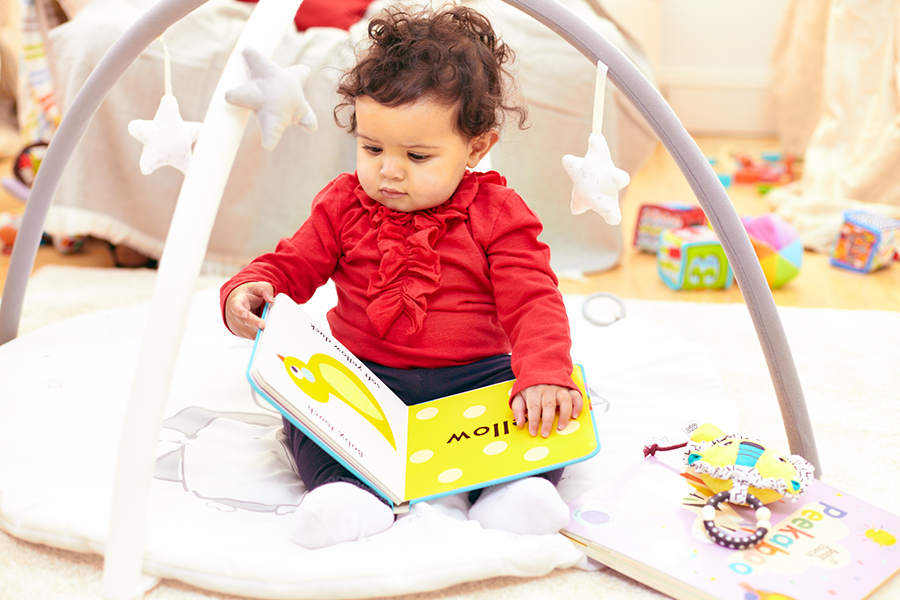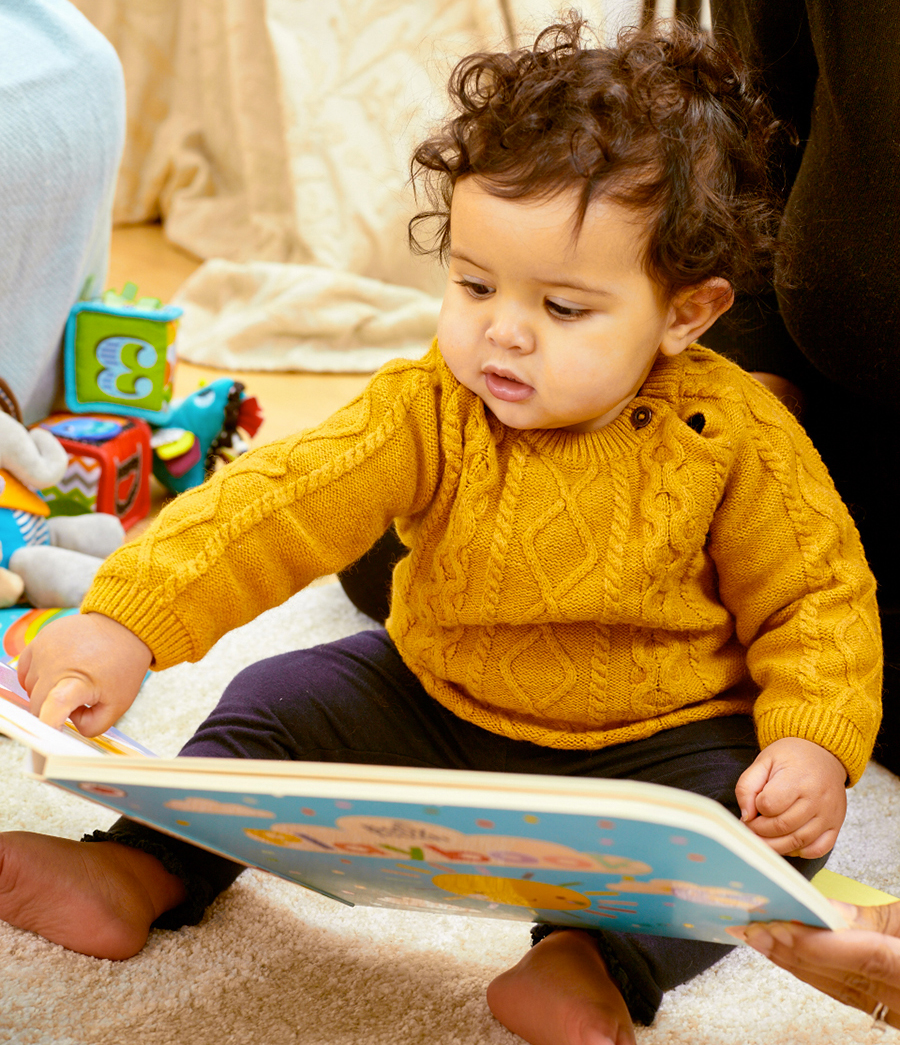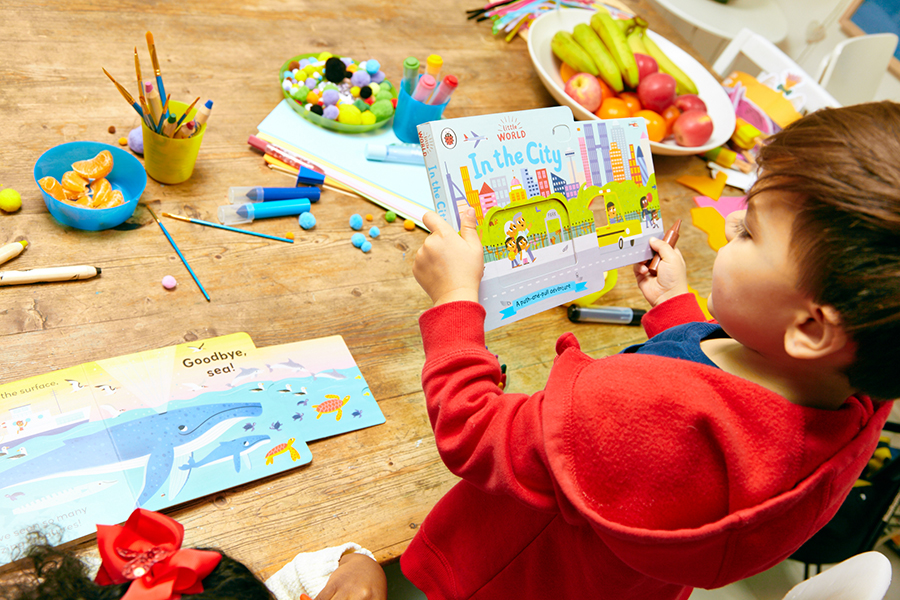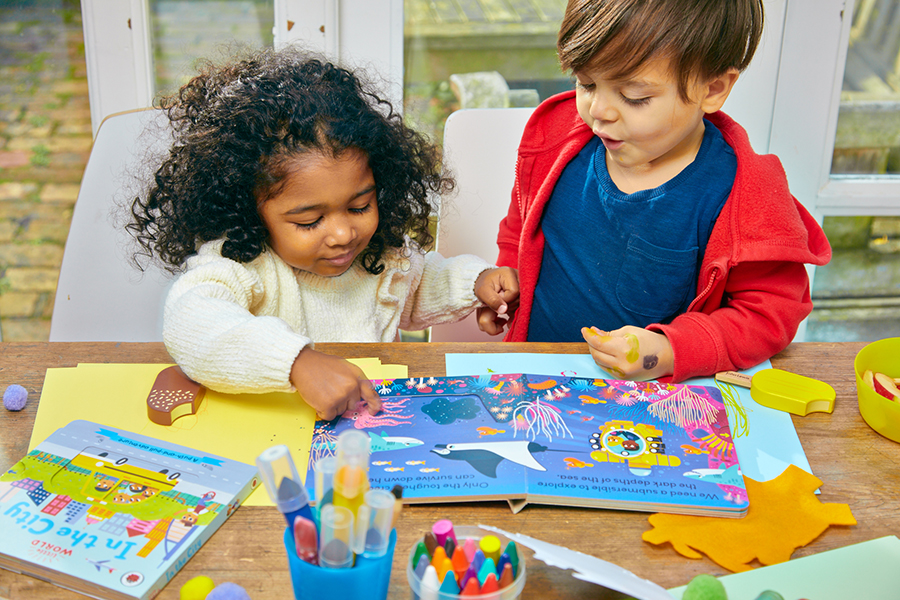- Home |
- Search Results |
- How to introduce books to your baby and young child
How to introduce books to your baby and young child
One of the most important skills your child will learn in life is being able to read. And, most importantly, reading for pleasure. Reading plays a major role in communication; linking into listening, speaking, and writing, and it also stimulates creativity. But how do you help your little reader reap the full benefits? Follow our tips and tricks.
Jump to: From 0 to 12 months | From ages 2 to 3 | From ages 4+

From 0 to 12 months
Your baby is alert from birth and their brain is making rapid progress. As early as the first week, your baby will respond to movement and to focus on your face, and eventually smile when you come close.
Over the next 10-12 weeks, your baby will start to follow moving objects with their eyes, especially toys and books with bold, geometric patterns. Newborns can only see black, white and grey. But as their colour vision develops babies will see red, and then the full spectrum of colours by the time they reach five months of age.
The best age to start reading books to your baby is from 3-6 months, or once they are able to focus on items such as a mirror or a toy.
As your baby begins to enjoy the rhythm and flow of the day, from feeding to sleeping, try to make reading books with your child an integral part of their daily life too.
Tips and tricks:

- Babies love books that stimulate their developing senses. Books that they can feel, with a range of textures – rough and smooth – are ideal.
- When reading with your baby, point out key images, like “car” and “house”. The more that you talk and read to them, the quicker they will learn to speak.
- Create a small reading area in your house, with a range of books in a basket and comfy cushions. As your baby begins to crawl, they will be curious to explore the books in the area.
- Talk to your baby at key times, for example, while feeding or dressing them. Describe what you are both doing, such as, “I’m going to put on your vest now.”
Books we recommend
From ages 2 to 3
Once your child becomes a toddler, they will begin to talk for meaning. They are likely to choose their favourite books again and again. Repeating stories can help them become a confident reader.
Toddlers learn by repetition. Which is one of the main reasons why they have their favourite books! They will also be able to recall the favourite parts of their books, such as, “I want to see the animals.”
Talking about stories and pictures with your child will stimulate and help develop their imagination.

Tips and tricks:
- Ensure a variety of books are available. Some can feature familiar environments such as in a house or in a park, and some can be about completely new places, such as on the moon!
- Books with tabs and flaps help grab a young child’s attention – they will love the interaction, and lifting the flaps and pulling the tabs will help to develop their fine motor skills.
- When reading a book to your toddler, ask them what they think will happen next. Stop at the end of a sentence and allow them to start the next sentence in the book.
- Or you could try discussing the book beforehand, sharing ideas on what may happen in the story. Once you have read the story together, talk about what happened.
Books we recommend
From ages 4+
Your little one may well start to read simple books by themselves at this stage. They will probably select their own favourite book and will enjoy trying to read it with you.
But do continue to read to your child as well as this will encourage them further and they will benefit from how you use intonation and different voices.

Tips and tricks:
- Grab a pen and paper and ask your child to tell their own story. Who is in it? What happens? You can write down their story for them, and then ask them to read it back to you or act it out.
- Try using story extension techniques. As you are reading the story, discuss with your child “What might happen next?” This helps with the comprehension of the story and pictures and aids your child in connecting with and fully understanding the book.